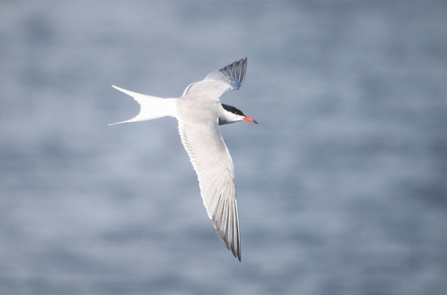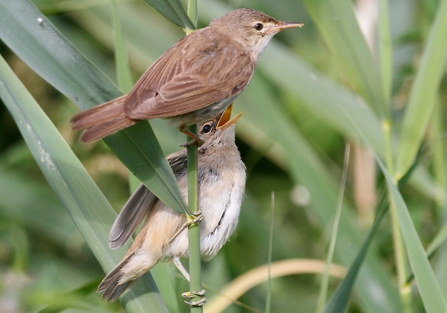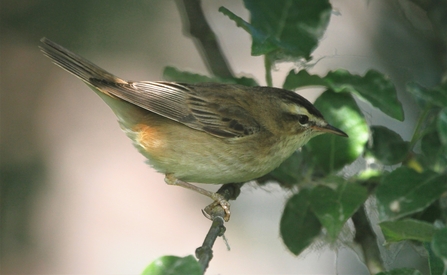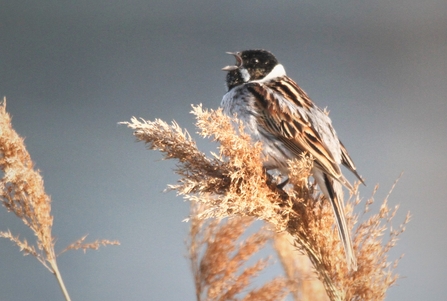
Common tern
Photo credit: Chris Farthing
Purple loosestrife
Photo credit: Chris Farthing

Common tern
Photo credit: Chris Farthing
Common terns (above) have been putting on a good show here since the start of May and they were seen almost every day through June, with a high count of eight birds being seen on the 29th. These birds are probably from the Walthamstow breeding colony. Little egrets, probably also from a breeding population at Walthamstow Wetlands, were seen regularly, though mostly only a single bird at a time. The favoured spot was around the water inlet.
The first returning shoveler was seen on the 15th, with a teal appearing a day later. One or two of each species was then seen occasionally for the rest of the month. Interestingly when males were seen, shoveler were in eclipse plumage whilst teal were still in breeding plumage. It is difficult to keep track of our breeding ducks as there are plenty of places to hide, and the only brood of ducks other than mallards seen so far this year were a family of pochard seen on the 22nd.
Two mistle thrushes seen on the 29th were probably juveniles resulting from breeding in one of the local parks, whilst peregrines which became a regular feature around mid-month, particularly on the cranes of the nearby building site, were of unknown origin.

Reed warblers
Photo credit: Chris Farthing
Reed warblers (above) breed here in good numbers and juveniles from first broods could be seen and heard all around the reed-bed during June. It is common to see adult birds foraging for insects in trees and bushes everywhere on site, and it can be a surprise when a small bird at the top of an Oak along the woodland trail turns out to be a reed warbler! Sedge warblers (below) are less common but we probably had two breeding pairs, with young being seen in the reed-bed and particularly in trees along the New River towards the end of the month.

Sedge warbler
Photo credit: Chris Farthing
Reed buntings (below) were also seen all month, with juveniles being seen but also a regular singing male. Two pairs probably bred here this year.

Reed bunting
Photo credit: Chris Farthing
The total number of bird species seen here in June 2022 was 58, a low monthly total but not far short of a typical June total.